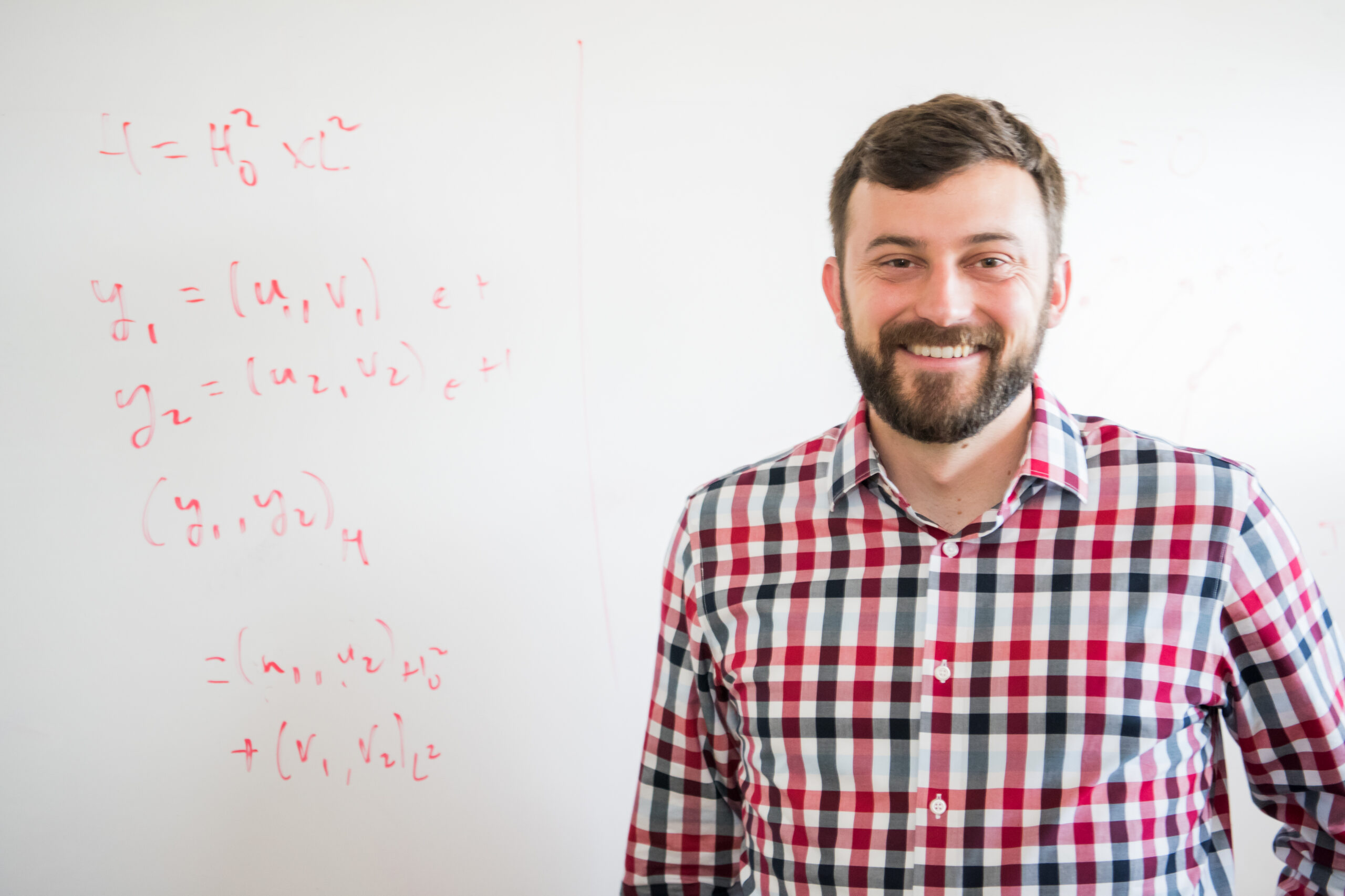Although objects like bridges, buildings, and airplane wings may seem quite rigid, by design they are capable of a surprising deal of bending. This elasticity allows them to deform safely and temporarily in windy conditions. However, very rarely, “Elastic systems like bridges, buildings, and planes can become oscillatory or unstable in the presence of everyday wind, with potential for the oscillations to become damaging,” says Justin Webster, associate professor of mathematics and statistics. “Understanding this has big implications for fields like civil engineering or alternative energy.”
Webster has received a new $290,000 National Science Foundation Division of Mathematical Sciences grant to “look at the mathematical models that describe these wind-structure systems,” he says, “and try to answer the questions, ‘What gives rise to these self-destabilization effects? And do I understand it well enough to stop it, or better yet, to prevent it altogether?’” In other words, can we prevent the bridge collapsing or the wings snapping off the plane in windy conditions?
In contrast, certain energy harvesting devices require oscillation to function. As wind flows over one of these flag-like surfaces, it flaps, or “flutters,” generating electrical current. With these energy harvesters—as opposed to planes and bridges—says Webster, “It’s the opposite: You want the oscillations to happen. Not only do we want this to happen, but we want it to happen in an optimal way.”
For some of these systems, there are no existing mathematical models. For others, models exist, but they don’t seem to capture the way these systems behave in the physical world very well. As a first step, Webster and his students, including new members brought on board with the NSF support, will work to generate new, relevant models or refine existing ones. Next, they will analyze how the models address key questions in three applications: a bridge, an airfoil (like a plane wing), and a flutter-driven energy harvesting device.
In each scenario, Webster and his team will ask, “What conditions give rise to flow-induced oscillations that appear to be spontaneous? And if they do happen, can the model predict what they will look like—such as bending, or, more dangerously, twisting?” Right now, the answer to the latter is “no.” The new grant will help Webster get closer to “yes,” and as a result, eventually improve infrastructure safety and the efficiency of some alternative energy devices.




